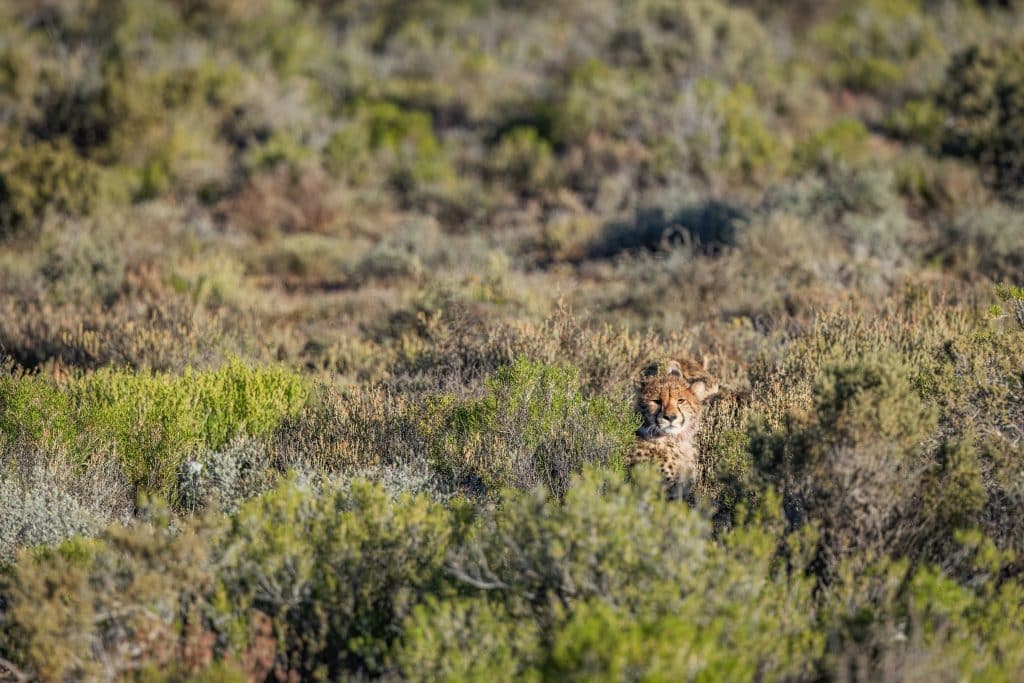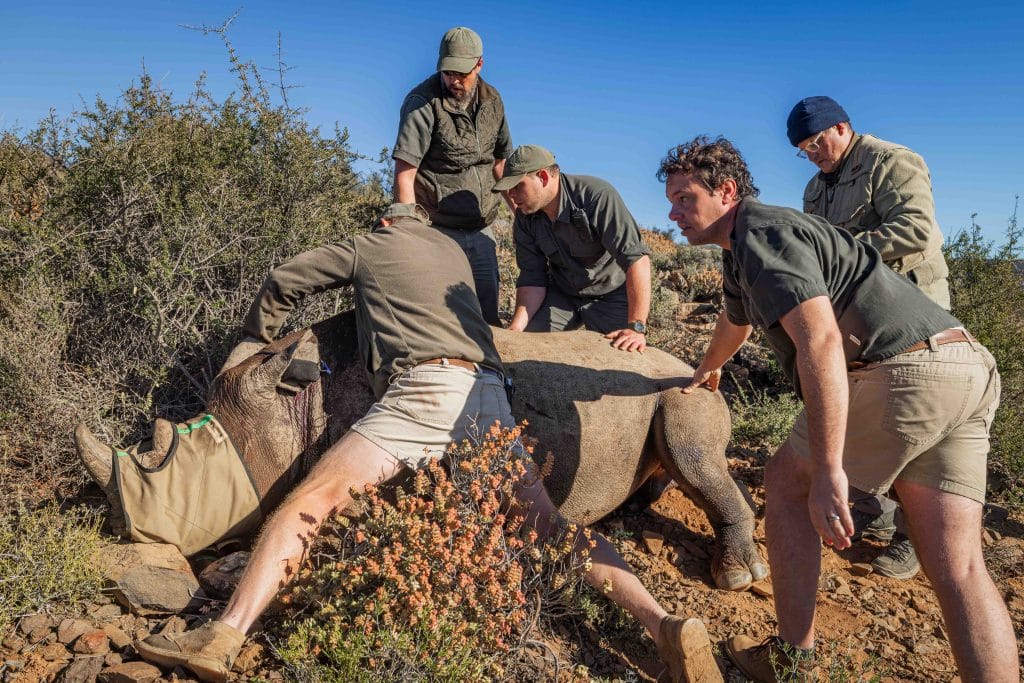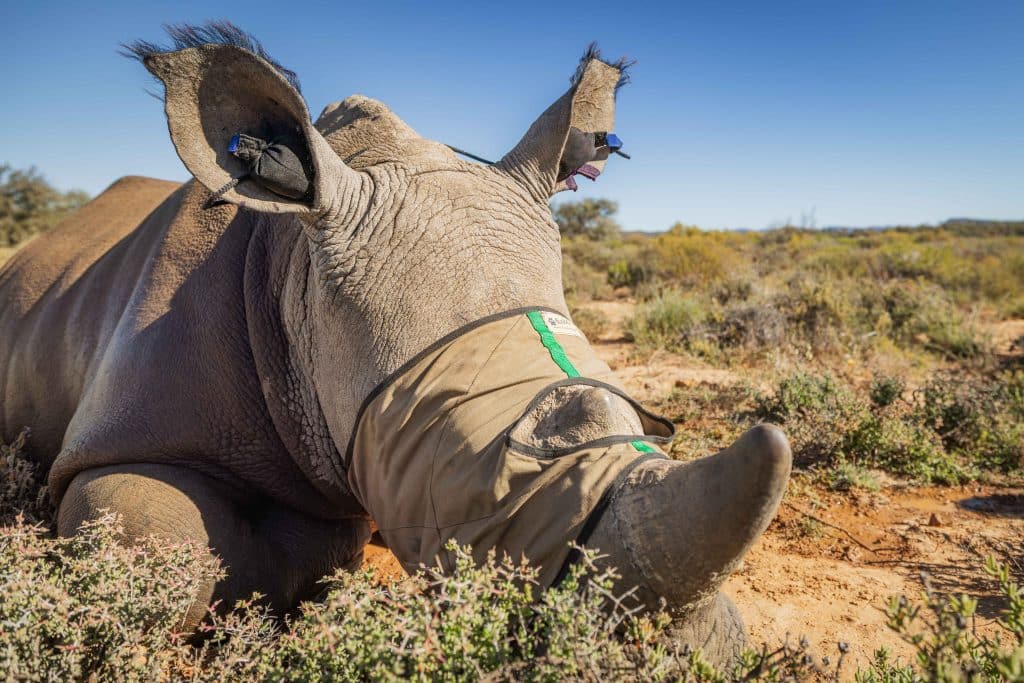The landscape is harsh: semi-arid mountains and valleys stretch to the horizon, displaying a patchwork of rocky slopes, thorny shrubs, and resilient succulents rooted in thin, arid soils. For people, this land is marginal — suitable for little more than degraded subsistence grazing. However, for biodiversity, it has an extraordinary capacity. Rhinos thrive in this rugged terrain. Black rhinos, in particular, browse on tough thornbushes, fibrous succulents, and even toxic Euphorbia plants, which are avoided by most other animals. This enables them to offer the landscape incredible tourism potential and, consequently, sustainable conservation.

Protecting these rhinos means protecting the entire ecosystem, from fragile habitats to the unique plants and animals that coexist with them. Since 2019, authorities have intercepted more than one million illegally harvested succulents in South Africa, representing hundreds of species. This underscores how trafficking pressures extend beyond charismatic wildlife.
Our team spent several days in this landscape, assisting reserve managers with rhino ear-notching operations. In terrain this rugged, helicopter use is essential. The expert pilot positions the rhinos for safe immobilization. At the same time, Markus Hofmeyr, a wildlife veterinarian and director of the Rhino Recovery Fund, calculates the dart trajectories with precision, aiming for large muscle groups to ensure the drugs act quickly and effectively. Preparation begins long before takeoff: immobilizing agents are carefully dosed for each animal’s size and condition, dart guns are cleaned and calibrated, and back-up darts, sterile tools, and monitoring equipment are laid out in advance.

Once a rhino is down, the ground team moves in. The helicopter pilot does his best to guide the animal into safe, accessible terrain, but occasionally a rhino collapses in thorn bushes or against rocks. In those moments, speed and teamwork are key. Repositioning the rhino prevents restricted breathing, poor circulation, or pressure injuries, and also provides veterinarians with access to carry out essential work, including ear notching, microchipping, DNA collection, and more.
Notching itself is quick and precise, all done while the animal is immobilized. Each rhino receives a unique pattern of minor ear cuts, linked to its microchip number and DNA samples stored in the Rhino DNA Index System (RhoDIS). This creates a permanent identity that can be recognized in the field, whether by ground patrols or aerial surveillance, such as helicopters and drones.

The team takes a DNA sample with a small drill from the base of the horn. Because every horn has a unique genetic fingerprint, this database can connect seized horns in the illegal trade back to individual animals, a powerful forensic tool in the worst-case scenario. The drill site is sealed with veterinary-safe material to prevent cracking and maintain the horn’s structural integrity.
Throughout the procedure, the animal’s welfare remains at the centre. Blindfolds and earplugs are fitted immediately to reduce sensory stress, and the veterinary team continuously monitors respiration and circulation (heartbeat). Once the reversal drug is administered, the vet lifts off in the helicopter to watch from above, ensuring the rhino wakes normally and moves away safely. This aerial oversight is especially important for black rhinos, which can wake suddenly and often display natural aggression toward any unfamiliar object, posing a serious risk to ground crews in treeless, open terrain.
What is especially unique about this landscape and operation is that the horns were left intact. One reason lies in the reserve’s context: extreme remoteness, virtually no mobile signal, and highly trained anti-poaching and K9 units, supported by drones.

Because wildlife criminals constantly adapt their strategies, conservationists must do the same. This reserve utilizes a high-tech thermal drone capable of silently and efficiently monitoring large areas, providing real-time intelligence to ground teams. In remote landscapes where roads are scarce and communication is limited, drones have become essential for both surveillance and security.
From a conservation and cost-saving standpoint, drones are used before any helicopter or ground efforts to find rhinos at dawn, when their body heat sharply contrasts with the cool ground. This makes them effective even in dense thickets or rugged valleys where visual tracking would be impossible. By locating animals before takeoff, drones significantly decrease flight hours, fuel expenses, and stress on the rhinos.
Dehorning remains a constant debate, and management policies are reviewed regularly; however, these landscapes demonstrate that it is still possible for rhinos to live with their horns.
Over several days, we helped safely notch rhinos in this remote, arid region-practical fieldwork that ensures each animal can be easily identified and better monitored. This operation was not just about notching rhinos; it was about building trusting relationships, fostering camaraderie, and expanding the Rhino Recovery Fund’s network. We are proud to have worked alongside reserve managers, rangers, and field experts, sharing knowledge, specific insights, and best practices to strengthen rhino conservation worldwide.

